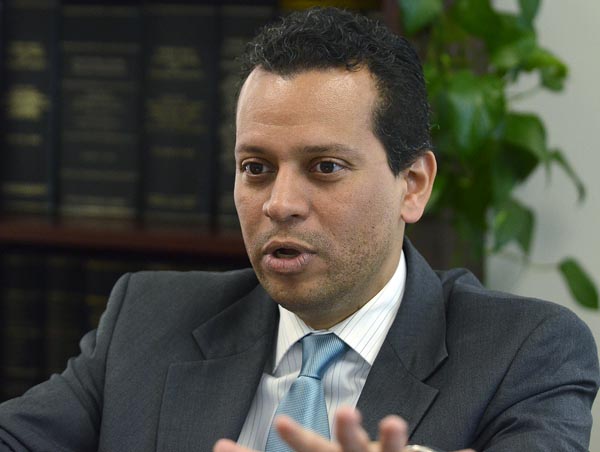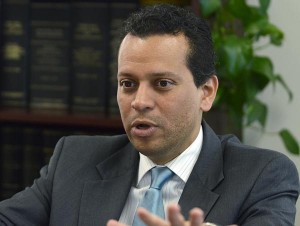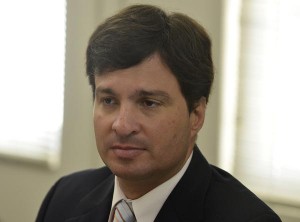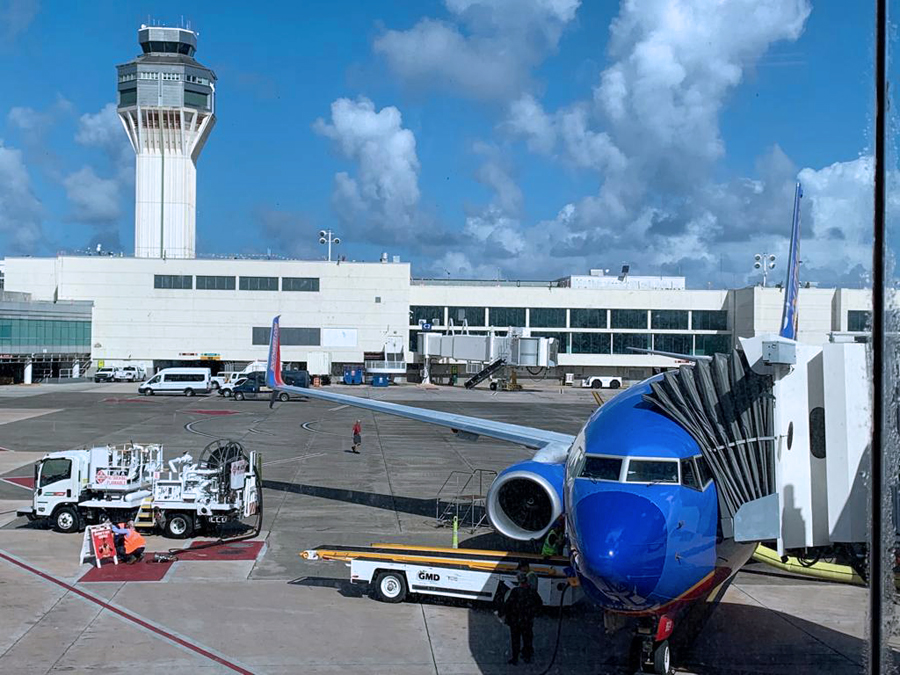LMM private operator to be announced by summer

The two consortia in the final running for the 40-year management concession of the Luis Muñoz Marín International Airport have already been selected, with the final winner to be announced by summer, Public Private Parnership Authority Executive Director Dávid Álvarez said Wednesday.
Flanked by airport and administration officials, Álvarez confirmed what News is my Business reported last week — the process has been narrowed down to two consortia: Grupo Aeropuertos Avance, composed by Spain’s Ferrovial Aeropuertos and Macquarie Infrastructure and Real Estate; and, Aerostar Airport Holdings, which couples Mexico’s Grupo Aeroportuario del Sureste and Highstar Capital.
The finalists, he said, presented proposals that were “dramatically different” from the 10 other competitors that had their eye on the P3 when it was announced last year, which will result in the transformation of the LMM airport into a “world-class facility.”
“Following a rigorous process that sought to increase the competitiveness level of the participants, we have identified two consortia to continue down the final stretch of the process,” he said. “Qualifying the finalists allows the government to ensure that only the most committed competitors will stay in the process.”
The two groups are headed by companies with vast knowledge of airport operations in the Caribbean and Europe, and have vowed to increase the value of the LMM airport and increase passenger and flight traffic at the facility, said Álvarez.
“These two groups understand that what we want is a world-class airport, the best airport in the Caribbean, and based on their performance and the proposals they submitted last month, they’ve shown the broad vision they have for this project,” he said, adding the competitors will be required to increase passenger movement and expenditures.
During the roundtable, Álvarez showed renderings of what the airport could look like in the hands of a private operator and investor, portraying a very modern facility with open spaces and upscale shopping.
Growing passenger traffic
In 2010, Puerto Rico received some 4.8 million visitors by air and sea, each of which spent an average of $740. This represented $3.6 billion for the economy.
“If what each visitor spends is increased by $100, that’s $480 million in new money for the economy,” said Álvarez.
Jaime López, deputy secretary of Economic Development and Commerce, said during the roundtable that the goal is for the new operator to increase the number of weekly flights out of LMM from the 1,304 in June.
“What makes this an attractive investment for these companies is that passenger demand comes from different sources, the local market, tourists, the business sector and cruises. No other place in the region offers these characteristics as a destination,” said a former Tourism Company executive director.
One crucial element needed to boost flight frequency and destinations is getting U.S. Customs and Border Patrol to re-establish a Federal Inspection Service at LMM, which the U.S. Department of Homeland Security closed down after 9/11. The local government has also asked the Federal Aviation Administration and security agencies to allow Puerto Rico to participate in the Visa Waiver Program, so that passengers from the 36 countries already in the program can travel to the island without having to apply for a Visa.
“We’ve already submitted a proposal to the FAA, because we believe that this would allow airlines to once again be able to fly people through Puerto Rico to the Caribbean, Central and Latin America,” López said.
That facility would give Puerto Rico a competitive advantage as the island would be able to again offer direct flights to major destinations, such as Mexico City and Colombia, he said, noting the P3 deal is not contingent on the government’s ability to land the FIS point.
Cash influx for strapped agency
Once the contract is awarded, the selected operator will have to make an up-front payment, plus pay an annual percentage of the revenue generated, to the Port Authority. While initially the government said it stood to receive $1 billion upon signing, that amount may be higher, Álvarez said.
“Neither amount has been determined. The proponents need to maximize both amounts,” he said.
Port Authority Executive Director Bernardo Vázquez said the money received will go toward paying down the agency’s whopping $1 billion debt, as well as “improving salary conditions for the agency’s employees.”
“With that money coming in, Ports will be able to make investments and take out loans, which it has not been able to do, as it has no credit available,” he said. “We have no credit and depend on the Government Development Bank for help.”
The government is expected to announce the company with which it will strike the public-private alliance for the airport facility before June 30, with the goal of getting the final approval from the FAA by September.














